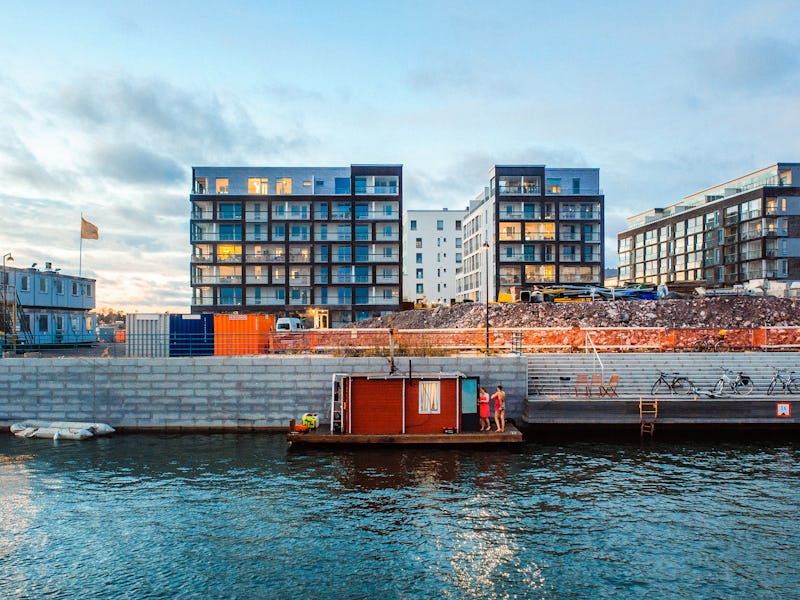
Finland has a reputation as a testing ground for social innovation — no small achievement for a country of only 5.5 million. Whether it’s providing expectant mothers with maternity boxes or trialling basic income as a replacement for current welfare schemes, the Fins have embraced both experimentation and a humane attitude toward the future. Their attitude often leads to singular solutions to universal problems, and this is on full display in a district outside Helsinki called Kalasatama.
In 2009, Kalasatama (translation: fishing port) didn’t exist. That year, Helsinki planners decided they needed a smart city district for pilot projects — a neighborhood purpose-built to supply proof of concept. Today, the area is a work in progress, but the progress has been prodigious. By the time it is completed in the 2030s, the district will have created 8,000 jobs and contain 200 football fields-worth of new housing.
While there are smart city initiatives all over the world, what’s unique about Kalasatama is an approach that gets an unusually broad range of people involved in decision-making. They call it co-creation.
“Co-creation takes place in every single pilot, development project, and experiment in Kalasatama,” says Veera Mustonen, program director for the Smart Kalasatama initiative.
When a project begins, companies, city authorities, citizens, and academics are invited to participate in workshops where roles and processes are defined collaboratively.
“Co-creation brings people together, incorporates many viewpoints and makes innovation processes richer and more democratic. It helps teams understand real world requirements, opens innovation processes to citizens, and provides new ways of participation,” Mustonen explains.
Helsinki's hottest district, Kalasatama, didn't even exist in 2009.
The co-creation process is not restricted to workshop environments. Students from Helsinki University’s Urban Academy used social media to collect data about how the area is perceived by citizens of Helsinki and what they want from the district as it develops. Through analysis of Instagram posts, the student researchers found that the neighborhood is portrayed as a versatile marine district and that its incompleteness was a major talking point.
The researchers also used Facebook to consult with local residents and understand their needs. Naturally, people living in Kalasatama complain about dust and noise coming from construction sites, but they also supply architectural feedback. It’s a community meeting that never stops.
Based on the feedback, planners in Kalasatama were able to adapt and change plans. Residents reacted positively to pop-up stalls appearing in the district, so city officials decided to host other kinds of events such as outdoor arts and crafts fairs. This agile and responsive atmosphere plays an important part of the identity of the district. Young adults in particular have been emboldened to use the space creatively and gained a sense of ownership over it.
“One of the pioneers of these kind of temporary uses was the Bermuda Helsinki. Various live events and exhibitions were staged on a ‘Konttiaukio’ (container square),” says Salla Jokela, the postdoctoral researcher who led the Urban Academy student team that developed the district’s brand identity. “These kind of uses and events have greatly influenced the image of Kalasatama, in addition to [complementing] the smart city idea promoted by the City of Helsinki.”
A local swims in Kalasatama during Helsinki Sauna Day.
Helsinki’s residents have come to expect innovation. In fact, the 2015 CITIE Index report ranks only London and New York higher than the Finnish capital when it comes to technology, innovation, and entrepreneurship.
“Kalasatama is a good example of the possibilities offered by hyperlocal development,” Mustonen adds. “It shows that even very locally it’s possible to engage different groups, and that networks get stronger when people work in proximity to each other.”
This year the country celebrates its centennial. It will do so by trumpeting not only what the country has been but what it could become. Finland’s past and future are two very different things, which is — and here’s the paradox — the most consistent thing about the place.